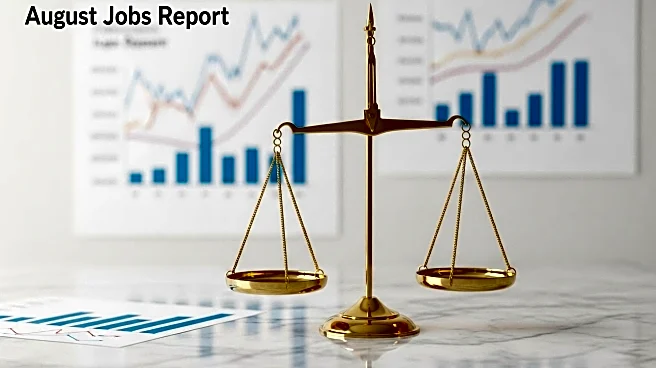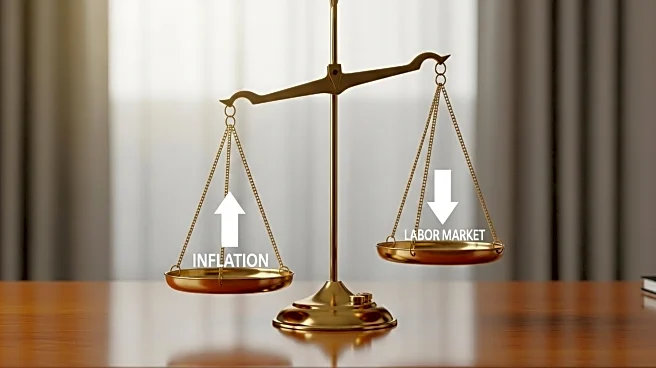What's Happening?
The Federal Reserve is contemplating a potential interest rate cut at its upcoming policy meeting on September 16-17, driven by concerns over the labor market. Recent data indicates a slowdown in job growth, with nonfarm payrolls increasing by only 22,000 in August and the unemployment rate rising to 4.3%, the highest in nearly four years. This has led to speculation among traders about a possible rate cut, with a 25 basis point reduction being the most likely scenario. However, there remains a 12% chance of a more significant half-point cut, reminiscent of the September 2024 meeting. Economists, including Citigroup's Andrew Hollenhorst, suggest that the soft jobs report could prompt the Federal Open Market Committee (FOMC) to resume rate cuts, potentially extending them over several meetings.
Why It's Important?
The potential rate cut by the Federal Reserve is significant as it reflects the central bank's response to conflicting economic indicators—rising inflation and a weakening labor market. A rate cut could stimulate economic activity by making borrowing cheaper, potentially aiding businesses and consumers. However, it also highlights the Fed's challenge in balancing its dual mandate of stable prices and full employment. The decision could impact various stakeholders, including financial markets, businesses, and consumers, who may benefit from lower borrowing costs. Conversely, persistent inflation remains a concern, which could affect purchasing power and economic stability.
What's Next?
If the Federal Reserve proceeds with a rate cut, it may set the stage for further reductions in the coming months, as suggested by Citigroup's forecast of cuts at the next five meetings. The Fed's decision will likely depend on upcoming inflation data and further labor market developments. Stakeholders, including policymakers and economists, will closely monitor these indicators to assess the need for additional monetary easing. The outcome of the September meeting could influence market expectations and economic strategies, with potential implications for interest rates, investment decisions, and consumer spending.











